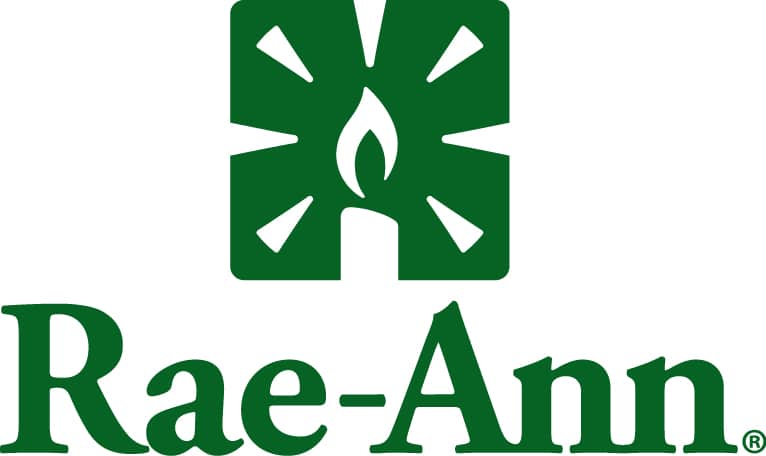The IRS recently issued its 2023 cost-of-living adjustments for more than 60 tax provisions. With inflation up significantly this year, many amounts increased considerably over 2022 amounts. As you implement 2022 year-end tax planning strategies, be sure to take these 2023 adjustments into account.
Also, keep in mind that, under the Tax Cuts and Jobs Act (TCJA), annual inflation adjustments are calculated using the chained consumer price index (also known as C-CPI-U). This increases tax-bracket thresholds, the standard deduction, certain exemptions, and other figures at a slower rate than was the case with the consumer price index previously used, potentially pushing taxpayers into higher tax brackets and making various breaks worth less over time. The TCJA adopts the C-CPI-U on a permanent basis.
Individual income taxes
Tax-bracket thresholds increase for each filing status but, because they’re based on percentages, they increase more significantly for the higher brackets. For example, the top of the 10% bracket increases by $725, to $1,450, depending on filing status, but the top of the 35% bracket increases by $22,950 to $45,900, again depending on filing status.
|
2023 ordinary-income tax brackets |
||||
| Tax rate | Single | Head of household | Married filing jointly or surviving spouse | Married filing separately |
| 10% | $0 – $11,000 | $0 – $15,700 | $0 – $22,000 | $0 – $11,000 |
| 12% | $11,001 – $44,725 | $15,701 – $59,850 | $22,001 – $89,450 | $11,001 – $44,725 |
| 22% | $44,726 – $95,375 | $59,851 – $95,350 | $89,451 – $190,750 | $44,726 – $95,375 |
| 24% | $95,376 – $182,100 | $95,351 – $182,100 | $190,751 – $364,200 | $95,376 – $182,100 |
| 32% | $182,101 – $231,250 | $182,101 – $231,250 | $364,201 – $462,500 | $182,101 – $231,250 |
| 35% | $231,251 – $578,125 | $231,251 – $578,100 | $462,501 – $693,750 | $231,251 – $346,875 |
| 37% | Over $578,125 | Over $578,100 | Over $693,750 | Over $346,875 |
The TCJA suspended personal exemptions through 2025. However, it nearly doubled the standard deduction, indexed annually for inflation through 2025. For 2023, the standard deduction will be $27,700 (married couples filing jointly), $20,800 (heads of households), and $13,850 (singles and married couples filing separately). After 2025, standard deduction amounts are scheduled to drop back to the amounts under pre-TCJA law unless Congress extends the current rules or revises them.
Changes to the standard deduction could help some taxpayers make up for the loss of personal exemptions. But it might not help taxpayers who typically used to itemize deductions.
AMT
The alternative minimum tax (AMT) is a separate tax system that limits some deductions, doesn’t permit others, and treats certain income items differently. If your AMT liability is greater than your regular tax liability, you must pay the AMT.
Like the regular tax brackets, the AMT brackets are annually indexed for inflation. For 2023, the threshold for the 28% bracket will increase by $14,600 for all filing statuses except married filing separately, which increased by half that amount.
|
2023 AMT brackets |
||||
| Tax rate | Single | Head of household | Married filing jointly or surviving spouse | Married filing separately |
| 26% | $0 – $220,700 | $0 – $220,700 | $0 – $220,700 | $0 – $110,350 |
| 28% | Over $220,700 | Over $220,700 | Over $220,700 | Over $110,350 |
The AMT exemptions and exemption phaseouts are also indexed. The exemption amounts for 2023 will be $81,300 for singles and $126,500 for joint filers, increasing by $5,400 and $8,400, respectively, over 2022 amounts. The inflation-adjusted phaseout ranges for 2023 will be $578,150–$903,350 (singles) and $1,156,300–$1,662,300 (joint filers). Amounts for married couples filing separately are half of those for joint filers.
Education and child-related breaks
The maximum benefits of certain education and child-related breaks generally remain the same for 2023. But most of these breaks are limited based on a taxpayer’s modified adjusted gross income (MAGI). Taxpayers whose MAGIs are within an applicable phaseout range are eligible for a partial break — and breaks are eliminated for those whose MAGIs exceed the top of the range.
The MAGI phaseout ranges will generally remain the same or increase modestly for 2023, depending on the break. For example:
The American Opportunity credit. For tax years beginning after December 31, 2020, the MAGI amount used by joint filers to determine the reduction in the American Opportunity credit isn’t adjusted for inflation. The credit is phased out for taxpayers with MAGI in excess of $80,000 ($160,000 for joint returns). The maximum credit per eligible student is $2,500.
The Lifetime Learning credit. For tax years beginning after December 31, 2020, the MAGI amount used by joint filers to determine the reduction in the Lifetime Learning credit isn’t adjusted for inflation. The credit is phased out for taxpayers with MAGI in excess of $80,000 ($160,000 for joint returns). The maximum credit is $2,000 per tax return.
The adoption credit. The phaseout ranges for eligible taxpayers adopting a child will also increase for 2023 — by $15,820, to $239,230–$279,230 for joint, head-of-household, and single filers. The maximum credit will increase by $1,060, to $15,950 for 2023.
(Note: Married couples filing separately generally aren’t eligible for these credits.)
These are only some of the education and child-related breaks that may benefit you. Keep in mind that, if your MAGI is too high for you to qualify for a break for your child’s education, your child might be eligible to claim one on his or her tax return.
Gift and estate taxes
The unified gift and estate tax exemption and the generation-skipping transfer (GST) tax exemption are both adjusted annually for inflation. For 2023, the amounts will be $12.92 million (up from $12.06 million for 2022).
The annual gift tax exclusion will increase by $1,000 to $17,000 for 2023.
Retirement plans
Nearly all retirement-plan-related limits will increase for 2023. Thus, depending on the type of plan you have, you may have limited opportunities to increase your retirement savings if you’ve already been contributing the maximum amount allowed:
Your MAGI may reduce or even eliminate your ability to take advantage of IRAs. Fortunately, IRA-related MAGI phaseout range limits all will increase for 2023:
| Type of Limitation | 2022 limit | 2023 limit |
| Elective deferrals to 401(k), 403(b), 457(b)(2) and 457(c)(1) plans | $20,500 | $22,500 |
| Annual benefit for defined benefit plans | $245,000 | $265,000 |
| Contributions to defined contribution plans | $61,000 | $66,000 |
| Contributions to SIMPLEs | $14,000 | $15,500 |
| Contributions to IRAs | $6,000 | $6,500 |
| “Catch-up” contributions to 401(k), 403(b), 457(b)(2) and 457(c)(1) plans for those age 50 and older | $6,500 | $7,500 |
| Catch-up contributions to SIMPLEs | $3,000 | $3,500 |
| Catch-up contributions to IRAs | $1,000 | $1,000 |
| Compensation for benefit purposes for qualified plans and SEPs | $305,000 | $330,000 |
| Minimum compensation for SEP coverage | $650 | $750 |
| Highly compensated employee threshold | $135,000 | $150,000 |
Traditional IRAs. MAGI phaseout ranges apply to the deductibility of contributions if a taxpayer (or his or her spouse) participates in an employer-sponsored retirement plan:
- For married taxpayers filing jointly, the phaseout range is specific to each spouse based on whether he or she is a participant in an employer-sponsored plan:
- For a spouse who participates, the 2023 phaseout range limits will increase by $7,000, to $116,000–$136,000.
- For a spouse who doesn’t participate, the 2023 phaseout range limits will increase by $14,000, to $218,000–$228,000.
- For single and head-of-household taxpayers participating in an employer-sponsored plan, the 2023 phaseout range limits will increase by $5,000, to $73,000–$83,000.
Taxpayers with MAGIs in the applicable range can deduct a partial contribution; those with MAGIs exceeding the applicable range can’t deduct any IRA contribution.
But a taxpayer whose deduction is reduced or eliminated can make nondeductible traditional IRA contributions. The $6,500 contribution limit for 2023 (plus $1,000 catch-up, if applicable, and reduced by any Roth IRA contributions) still applies. Nondeductible traditional IRA contributions may be beneficial if your MAGI is also too high for you to contribute (or fully contribute) to a Roth IRA.
Roth IRAs. Whether you participate in an employer-sponsored plan doesn’t affect your ability to contribute to a Roth IRA, but MAGI limits may reduce or eliminate your ability to contribute:
- For married taxpayers filing jointly, the 2023 phaseout range limits will increase by $14,000, to $218,000–$228,000.
- For single and head-of-household taxpayers, the 2023 phaseout range limits will increase by $9,000, to $138,000–$153,000.
You can make a partial contribution if your MAGI falls within the applicable range, but no contribution if it exceeds the top of the range.
(Note: Married taxpayers filing separately are subject to much lower phaseout ranges for both traditional and Roth IRAs.)
2023 cost-of-living adjustments and tax planning
With the 2023 cost-of-living adjustment amounts soaring higher than 2022 amounts, it’s important to understand how they might affect your tax and financial situation. We’d be happy to explain the best tax-saving strategies to implement based on the 2023 numbers.
© 2022
Related Insights
Featured Post

Featured Client Testimonials
BW is a true partner to us. Their knowledge, expertise, and service are a valuable resource to us and play an important role in our success!
John Allen - Vice President of Finance, Kaufman Container

Featured Client Testimonials
I appreciate the exceptional tax advice we received over the years. The (BW team) has a good grasp of our business needs. Thank you for your excellent service.
John Griffiths - Owner, Rae Ann, Inc.

Featured Client Testimonials
Barnes Wendling has been our company accountants for over seven years. Their knowledge has been instrumental in helping us grow strategically during this time. And although we’ve seen many changes in our economy that we cannot control, we’ve always been able to trust the Barnes team to be by our side. The Barnes team feels like family. We can’t thank them enough for their support!
Christine Kloss - Controller, AT&F

Featured Client Testimonials
Barnes Wendling has been our company accountants for over 15 years. During this time, the business has grown exceptionally, and Barnes has kept pace, providing accurate, quality advice. Our finances are more efficient than ever, and the expense of hiring Barnes has been a definite positive add to our bottom line. I give my highest recommendation to their firm.
David Miller, MD - President, Retina Associates of Cleveland

Featured Client Testimonials
Barnes Wendling has provided us guidance and recommendations that have strategically helped strengthen our business and position ourselves for growth. We needed to hire a new VP of Finance and Controller this past year, and they were instrumental in helping us find the best candidates for our company.
Sara Blankenship - President, Kaufman Container

Featured Client Testimonials
We value the trust, accuracy of information, and reliability of Barnes Wendling and Mike Essenmacher personally. Mike has been instrumental as a trusted advisor on accounting, tax, and personnel issues. His advice is always accurate, and he is very reliable. His associates are also very talented.
Dominic Ozanne - President and CEO, Ozanne Construction Company

Featured Client Testimonials
We value Barnes Wendling’s expertise with all things accounting so we can operate our business using our strengths and allowing them to be our experts. They have also brought me a few business sale opportunities to allow me to grow my assets.
John Gaydosh - President and Metallurgical Engineer, Ohio Metallurgical Service

Featured Client Testimonials
Barnes Wendling (especially Lena) did a great job with our financials. Everything. It is extremely refreshing and comforting to know that all of our numbers are not only correct, but they are in the right place(s). Your diligence and reporting truly does make me (personally) feel better.
Thomas Adomaitis - Controller, Bialosky Cleveland

Featured Client Testimonials
I can wholeheartedly tell you that I have yet to work with an audit or tax team that have been more helpful, easy to work with, and committed than the team at Barnes Wendling- I have been through three different firms in the last few years.
Michelle Saylor, Former Controller, Aero Mag

Featured Client Testimonials
Floyd Trouten at Barnes Wendling CPAs is an “expert’s expert” when it comes to M & A accounting. Not only does he understand the evolving details of the Tax Code but he also sees the fine points of their application for owners, managers, investors, and financiers.
Mark A. Filippell, Western Reserve Partners

Featured Client Testimonials
The service is amazing at Barnes Wendling CPAs. The benefit is worth more than the cost. Sometimes it’s true that you get what you pay for.
Mark Boucher - Former Owner, Castle Heating & Air








